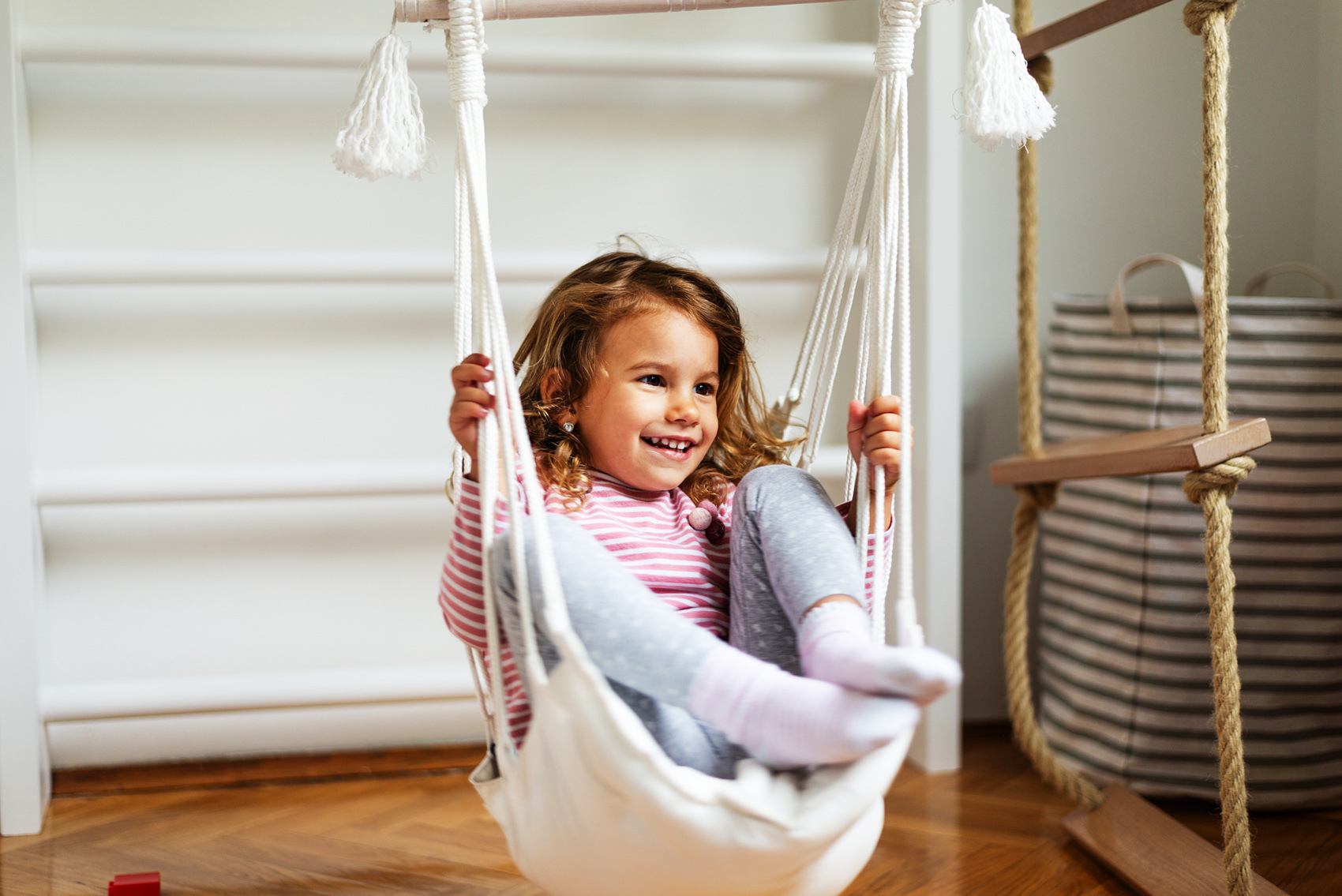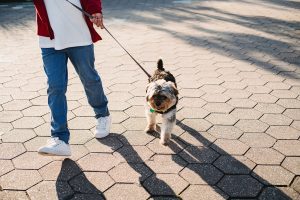
Spis treści:
Dziecko samo w domu po raz pierwszy – jak przygotować malucha?
Taki mały i bez opieki? Jedni nie mają problemu z zostawieniem śpiącego malucha i skoczeniem do sklepu po bułki, inni nie wyobrażają sobie spuścić z oka wychuchanego potomka aż do osiemnastki. Tak źle i tak niedobrze. Stopniowe odpuszczanie kontroli i poszerzanie samodzielności to niezbędny element wychowania. Ważne jest, kiedy i jak tę samodzielność poszerzać. Żeby móc zostać samemu w domu, maluch musi być w wystarczającym stopniu niezależny od dorosłych. Umieć wykonać podstawowe czynności, sprawnie się poruszać, dosięgnąć do wyłącznika światła. To oczywiste. Dobrze, gdy jest na tyle odpowiedzialny, aby przewidzieć konsekwencje swoich zachowań, krótko mówiąc – wiedzieć, które zachowania są bezpieczne, a które nie, i faktycznie się do tego stosować.
O ile przedszkolaki bywają jeszcze nieobliczalne, dzieci w wieku szkolnym (nawet te młodsze, jeśli są wystarczająco dojrzałe) powinny zadaniu podołać. Ale jak to tak, kilkulatek sam w domu? Wyobraźnia podpowiada milion dramatycznych scenariuszy: podpali dom, zaleje sąsiada, połamie sobie nogi, skacząc ze schodów. Potencjalnych zagrożeń w każdym domu jest mnóstwo, ale nie sposób wyeliminować wszystkich. Zapanujmy więc nad tym, na co możemy mieć wpływ. Kluczowe dla powodzenia misji „sam w domu” są właściwy moment i odpowiednie przygotowanie. Na rozstanie, nawet krótkie, gotowe muszą być obie strony. Nie rzucajcie malucha od razu na głęboką wodę. Warto zacząć od krótkich wypadów do sklepu czy do sąsiadów. Znikacie na kwadrans czy dwa, jesteście blisko i w każdej chwili możecie zainterweniować. Czas nieobecności wydłużajcie stopniowo, trening czyni mistrza.
Dziecko samo w domu – podstawowe zasady
Co powinno wiedzieć dziecko, które zostaje samo w domu? Przede wszystkim, że jest samo – niedopuszczalne jest znikanie w czasie jego snu. Gdy obudzi się w pustym mieszkaniu, może wpaść w panikę.
Przed wyjściem trzeba upewnić się, że:
- dziecko wie, dokąd wyszli opiekunowie i kiedy wrócą;
- wie, do kogo i w jaki sposób zwrócić się o pomoc w razie potrzeby (np. sąsiedzi z przeciwka, do których można zapukać) i zna numery do służb ratowniczych;
- potrafi skontaktować się z rodzicami (dziecko nie musi nawet umieć wybijać pełnego numeru, telefon można zaprogramować na wybieranie głosowe lub za pomocą jednego klawisza, do którego będzie przypisany numer mamy lub taty);
- wie, czego robić mu nie wolno (od informowania, że jest samo i otwierania drzwi komukolwiek, przez nadmierne objadanie się, do zakazanych zabaw). Lista pełna zakazów nie brzmi zachęcająco. Dla równowagi omówcie też, co można w czasie nieobecności rodziców robić (oglądać film, rysować, czytać książkę…). To pomoże wykluczyć realizację szalonych pomysłów, jakie mogą wpaść do głowy w chwili wyjątkowej nudy.
A co o braku nadzoru mówi prawo?
Zgodnie z przepisami, dziecko do lat 7 nie może pozostawać bez opieki w okolicznościach stwarzających potencjalne zagrożenie. Czyli: przedszkolak nie, ale uczeń już jak najbardziej tak. Warto jednak pamiętać, że dzieci są różne i tak, jak zdarzają się wyjątkowo odpowiedzialni i rozsądni pierwszo- czy drugoklasiści, tak nie można z góry założyć, że każdy dziesięciolatek na wszystkie wyzwania, jakie niesie nawet godzina spędzona zupełnie samemu w domu (zwłaszcza te nietypowe, jak choćby awaria prądu), jest już gotowy. Decyzja „kiedy?” w ogromnej mierze zależy od nas samych i od charakteru latorośli. Bo kto zna dziecko lepiej niż jego rodzice?
Jak rozmawiać z dzieckiem o bezpieczeństwie, gdy zostaje samo w domu?
Zanim zostawicie dziecko samo w domu, warto zastanowić się, czy to w ogóle dla niego dobry moment. Niektóre dzieci są na to gotowe szybciej, inne potrzebują więcej czasu i wsparcia. Warto przede wszystkim słuchać dziecka. Jeśli na samą myśl o pozostaniu samym zaczyna panikować i mówi o strachu, nie należy ignorować jego uczuć. Takie komunikaty z jego strony oznaczają, że absolutnie wasza pociecha nie jest gotowana na ten etap. Jeśli dziecko zostanie samo w domu zbyt wcześnie, zaważy to na jego poczuciu bezpieczeństwa i może pozostawić w nim traumę, którą będzie odczuwał nawet w dorosłym życiu.
Jeśli widzicie jednak, że dziecko jest gotowe na pozostanie samo w domu, w pierwszej kolejności jest zadbanie o jego bezpieczeństwo. Ważne, by porozmawiać z dzieckiem i pokazać mu, jak obsługiwać proste sprzęty domowe, a także jak zachować się, kiedy ktoś zadzwoni do drzwi. Dziecko musi wiedzieć, co zrobić w danej sytuacji. Inaczej może wpaść w panikę lub narazić się na niebezpieczeństwo. Należy z nim o tym jak najwięcej rozmawiać. Na początek można zacząć od książek, które poruszają temat bezpieczeństwa w domu, a także podawać konkretne przykłady. Dzięki temu dziecko lepiej zapamięta podane informacje i będzie mogło wziąć z nich przykład w kryzysowej sytuacji. Następnie można przetestować zostawanie samemu. Wyjdźcie przed dom na parę minut, żeby dziecko zobaczyło, jak się z tym poczuje. Ważne też, by wiedziało, że w każdej chwili może przerwać eksperyment.
Poinformujcie dziecko, kiedy zostanie samo w domu. Zaznaczcie też ten dzień w kalendarzu, by nie zapomniało. Przed każdym wyjściem należy także informować, gdzie idziecie, jak długo was nie będzie i w jaki sposób dziecko może się wami skontaktować, jeśli nie będziecie odbierać telefonu. Przestrzeżcie dziecko, by nie otwierało drzwi nikomu innemu, nawet jeśli powie, że jest z rodziny, znajomym czy sąsiadem. Uprzedźcie swoją pociechę, by nie podawało nikomu informacji, że jest samo – ani w wiadomościach ze znajomymi, ani w mediach społecznościowych. Przećwiczcie razem, co dziecko ma powiedzieć przez telefon, jeśli ktoś zapyta się je, czy jest samo. Upewnijcie się również, że dziecko zna na pamięć numery alarmowe oraz wie, z kim się skontaktować i co zrobić w sytuacji realnego zagrożenia zdrowia lub życia. Zastanówcie się też razem z dzieckiem, jak może sobie pomóc, kiedy poczuje strach, znudzenie, samotność lub pokłóci się z rodzeństwem.
Ustalcie również zasady, jakie mają panować, kiedy dziecko zostaje samo w domu. Wasza pociecha powinna wiedzieć:
- kiedy może wyjść z domu i do kogo,
- jakie są zasady przyprowadzania do domu przyjaciół,
- jak używać sprzętów domowych i które może,
- jak przygotować sobie przekąski i posiłki,
- jakie ma obowiązki domowe do wykonania, kiedy rodziców nie ma w domu,
- jak zachować się, kiedy poczuje zapach gazu lub dymu,
- co robić podczas burzy,
- podstawowe zasady pierwszej pomocy i to, gdzie znajduje się apteczka.
Zabawki i aktywności dla dzieci, które zostają same w domu
Dziecko pozostawione samo w domu powinno wiedzieć, jak samodzielnie organizować sobie czas. Wiadomo jednak, że jak kota nie ma, to myszy harcują. Warto więc zadbać o to, by dziecko wiedziało, co ma robić. Niech to będzie odrabianie lekcji czy proste zadanie, które powinno zostać wykonane zanim rodzic wróci do domu. Może być to umycie naczyń czy wytarcie kurzy w domu. Dziecko powinno także znać zasady używania komputera i telewizora. Ustalcie wcześniej czas, jaki może spędzić przed ekranem, kiedy zostaje samo w domu.
Możecie też ustalić, że dziecko podczas waszej nieobecności przeczyta jakąś książkę, o której wam później opowie. Dziecko powinno też wiedzieć, co może robić (np. oglądać bajkę, rysować), a czego absolutnie mu nie wolno. Ustalcie też zasady, kiedy dziecko może samo wyjść na plac zabaw i z kim.
Jak rozwijać samodzielność dziecka, nie tylko w domu
Rozwijanie samodzielności dziecka powinniście rozpocząć zanim maluch zostanie pierwszy raz sam w domu. Warto je wprowadzać w samodzielność stopniowo i nie ograniczać się jedynie do domu, ale ćwiczyć ją także poza nim. Możecie zacząć od podejmowania przez dziecko własnych decyzji. Niech w sklepie to ono wybierze produkty, które należy kupić. Warto także przejść się z nim po okolicy, w której mieszkacie, jednak nie wskazywać drogi. Dobrze, by dziecko samo wybrało trasę spaceru i potrafiło samodzielnie wrócić do domu. Zanim wasza pociecha zostanie sama w domu, powinna potrafić przygotowywać sobie proste dania. Pozwólcie dziecku w weekend zrobić śniadanie i przygotujcie dla niego sprzęty kuchenne, których może używać, a których nie.
Technologie wspomagające bezpieczeństwo dziecka, gdy zostaje samo w domu
Do zapewnienia bezpieczeństwa dziecku w domu i poza nim przydadzą wam się także elektroniczne urządzenia. Jest ich naprawdę sporo, więc możecie wybrać nie tylko pasujący do waszych warunków rodzaj technologii, lecz także cenę. Przykładem mogą być kamery smart wyposażone w mikrofony dwukierunkowe, dzięki czemu będziecie mieć kontakt z dzieckiem w każdej sytuacji. Będziecie mogli porozmawiać z nim, gdyby nie odbierało telefonu, a także sprawdzić, co robi. Jeśli dziecko wychodzi samo z domu podczas waszej nieobecności, ustawcie na jego telefonie opcję lokalizacji. Dzięki temu w każdym momencie będziecie mieli podgląd, gdzie znajduje się wasza pociecha. Warto także zainwestować w zegarek z lokalizatorem, który umożliwi sprawdzenie lokalizacji dziecka w telefonie rodzica. Takie urządzenia mają także wbudowany telefon oraz przycisk SOS, a opiekun dziecka sam wyznacza strefy bezpieczeństwa, takie jak dom czy szkoła. Niektóre zegarki mają także rozbudowane opcje pozwalające na rozmowy wideo.











































